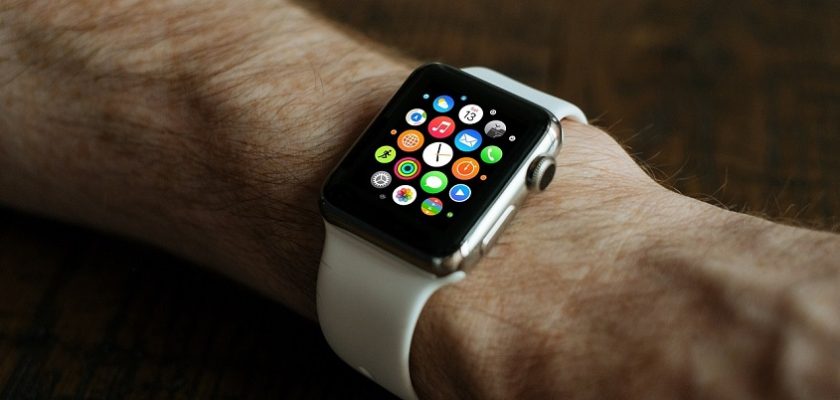The Potential of Wearable Technology to Revolutionize Patient Monitoring and Care
- Posted on February 16, 2023
- By Vishakha Yadav
- Read 4 minutes

Wearable technology has the potential to revolutionize patient monitoring and care by providing continuous, real-time monitoring of vital signs and other health metrics. This technology has the potential to improve patient outcomes by detecting medical issues early and collecting more accurate data, as well as increase efficiency and cost savings for healthcare providers. However, challenges such as data security and privacy concerns, limited interoperability with existing healthcare systems, and the need for improved accuracy must be addressed. With advancements in machine learning and AI, increased focus on patient-generated data, and the integration with electronic health records, the future of wearable technology in healthcare looks promising.
Advantages of Wearable Technology in Patient Monitoring and Care
Wearable technology has brought about numerous advantages to patient monitoring and care, which have significantly impacted the healthcare industry. Firstly, it has significantly improved patient outcomes through the early detection of medical issues and the acquisition of more precise and accurate health data. This has allowed healthcare providers to intervene earlier and provide more personalized treatment plans. Secondly, wearable technology has also fostered better patient engagement and adherence to treatment regimens, as patients are more motivated to take control of their own health and wellness.
Moreover, wearable technology has enhanced the efficiency of healthcare delivery and reduced costs. Healthcare providers can now remotely monitor patients, reducing the need for in-person visits and reducing the burden on healthcare facilities. Additionally, wearable technology can help manage chronic conditions such as diabetes and heart disease, providing real-time monitoring and alerts to healthcare providers, enabling prompt and effective intervention.
Applications of Wearable Technology in Healthcare
Wearable technology has numerous applications in healthcare, enabling continuous monitoring of vital signs and facilitating remote patient monitoring. The technology has been utilized to track heart rate, blood pressure, activity levels, and sleep patterns, providing healthcare providers with valuable insights into patients’ health status. Remote patient monitoring has also become more prevalent, allowing healthcare providers to monitor patients from a distance, reducing the need for in-person visits and reducing the burden on healthcare facilities.
Additionally, wearable technology has proven to be particularly useful in managing chronic conditions such as diabetes and heart disease, providing real-time monitoring and alerts to healthcare providers. This enables prompt and effective intervention, leading to improved patient outcomes and better health outcomes for individuals with chronic conditions.
Challenges and Limitations of Wearable Technology in Healthcare
Despite the numerous advantages and applications of wearable technology in healthcare, there are several challenges and limitations that need to be addressed to fully realize its potential. One of the most significant challenges is data security and privacy. Wearable technology generates vast amounts of sensitive health data, and there is a risk of unauthorized access and misuse of this data. Ensuring the security and privacy of health data is crucial to prevent breaches and protect patients’ privacy.
Another significant challenge is the limited interoperability of wearable technology with existing healthcare systems. Wearable technology is not always compatible with existing healthcare information systems, which can lead to discrepancies and errors in health data. Ensuring seamless integration between wearable technology and healthcare information systems is critical to promote the efficient and effective use of wearable technology in healthcare.
Finally, there is a need for improved accuracy and reliability of wearable devices. Wearable technology is only as reliable as the devices used to collect and transmit health data. The accuracy of health data collected by wearable technology can be impacted by various factors, including incorrect placement of the device and interference from other sources. Improving the accuracy and reliability of wearable devices is essential to ensure that healthcare providers can rely on the health data generated by wearable technology.
Future Trends and Developments in Wearable Technology for Healthcare
Here are some of the future trends and developments in wearable technology for healthcare:
- Integration with Electronic Health Records (EHRs): The integration of wearable technology with EHRs will allow for seamless and efficient exchange of health data between healthcare providers and patients. This will enable healthcare providers to make better treatment decisions and improve patient outcomes.
- Advancements in Machine Learning and AI: The incorporation of machine learning and AI algorithms into wearable technology will enable more accurate and sophisticated analysis of health data. This will enable healthcare providers to detect and respond to medical issues early and provide more personalized treatment plans.
- Increased Focus on Patient-Generated Data: Wearable technology generates vast amounts of patient-generated health data, which can be used to improve patient outcomes and better understand patient needs. Healthcare providers will increasingly use this data to inform treatment decisions and develop more personalized care plans.
- Wearable Technology for Mental Health: Wearable technology will increasingly be used to monitor and improve mental health. This could include tracking sleep patterns, mood, and stress levels, as well as providing personalized support and interventions for individuals with mental health conditions.
- Development of Smart Clothing: The development of smart clothing that integrates wearable technology into clothing and textiles will provide more discreet and continuous monitoring of vital signs and other health metrics. This could provide a more comfortable and convenient way for individuals to monitor their health and wellbeing.
- Integration with Telemedicine: The integration of wearable technology with telemedicine will enable remote patient monitoring and telehealth consultations, providing a more accessible and efficient way for patients to receive healthcare services.
